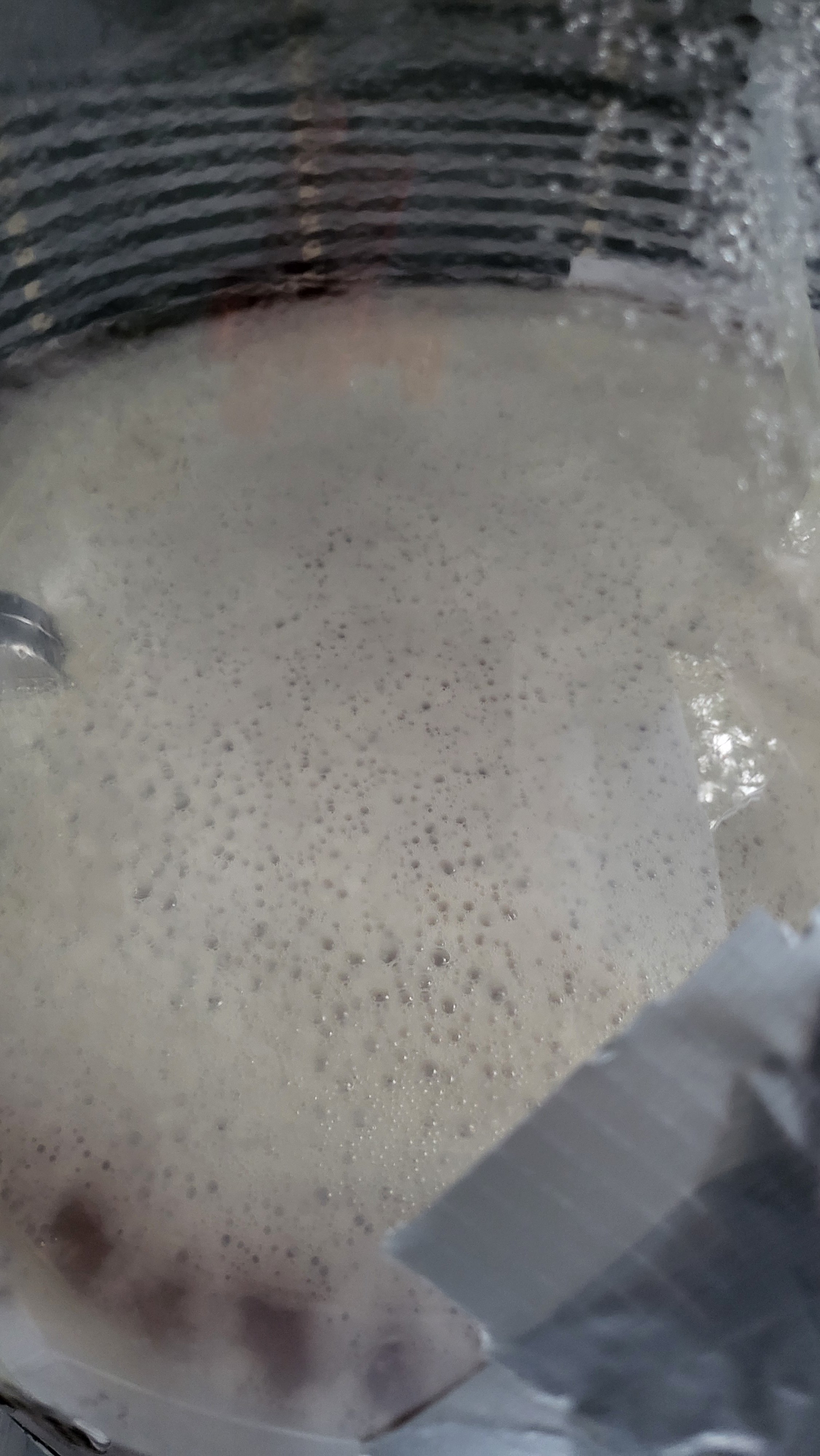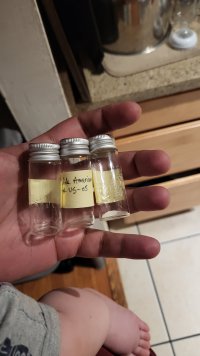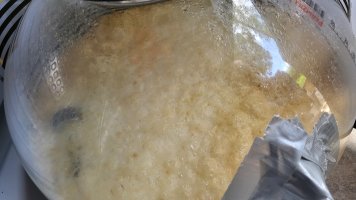Hi All,
It's been a while and I'm glad to be back doing what I love. Coming back into the mix I was able to hit my gravity fairly better than in the past. Mostly due to my use of really thick blankets for my mash. I also mash 10 minutes longer than usually and only have to turn the heat on once during the entire 80-90 min mash. Just excited about this so i had to share!
I'm brewing an American Pale Ale (Modified soulless hop ale kit from more beer). I decided to use my harvested yeast for the first time. I created a 1L starter with 3 small vials of US-05 American and light DME. The starter was good but not vigorous as I have had in the past, most likely due to the lack of yeast cells. This had me worried about my final product once i poured into the fermenter.
I believe US-05 is notorious for slow start but I finally saw something happening and this is what it's looking like 39 hours in.
Question is, does this look healthy for that strain of yeast and this many hours in?

It's been a while and I'm glad to be back doing what I love. Coming back into the mix I was able to hit my gravity fairly better than in the past. Mostly due to my use of really thick blankets for my mash. I also mash 10 minutes longer than usually and only have to turn the heat on once during the entire 80-90 min mash. Just excited about this so i had to share!
I'm brewing an American Pale Ale (Modified soulless hop ale kit from more beer). I decided to use my harvested yeast for the first time. I created a 1L starter with 3 small vials of US-05 American and light DME. The starter was good but not vigorous as I have had in the past, most likely due to the lack of yeast cells. This had me worried about my final product once i poured into the fermenter.
I believe US-05 is notorious for slow start but I finally saw something happening and this is what it's looking like 39 hours in.
Question is, does this look healthy for that strain of yeast and this many hours in?











































![Craft A Brew - Safale S-04 Dry Yeast - Fermentis - English Ale Dry Yeast - For English and American Ales and Hard Apple Ciders - Ingredients for Home Brewing - Beer Making Supplies - [1 Pack]](https://m.media-amazon.com/images/I/41fVGNh6JfL._SL500_.jpg)
















